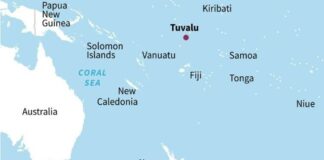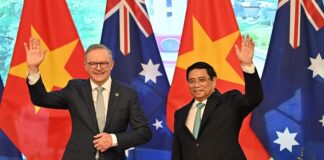OVER THE past month, Chinese paramilitary police and soldiers have been using tear gas and live ammunition against protesters in Lhasa, the Tibetan capital, in an attempt to put down the most visible resistance against Chinese rule in the country for nearly 20 years.
According to exile Tibetan groups, up to 150 Tibetan political activists have been killed over the past month, as the Chinese government opts for a “zero tolerance” stance against in the lead up to the Beijing Olympic Games.
This latest round of protests and rioting in Tibet began with police attacking a March 10 demonstration in Lhasa, commemorating the anniversary of the 1959 Tibetan uprising, during which up to 460,000 Tibetans were killed by the Chinese military. Tensions escalated into a full-scale riot on March 14. Since then the momentum has spread even further, with protests in the Chinese provinces of Sichuan, Qinghai and Gansu and a sit-in involving more than a hundred students in Beijing.
China has imposed a media blackout-it is important for the government to prevent the Tibetan struggle finding allies in Chinese trade unions fighting factory closures, the climate change campaign and peasant movements-whose struggles provoke a similarly violent response from the Chinese police and military.
Regardless of media manipulation, historical and economic evidence shows the Tibetan movement is not going to be as easy to dismantle as China hopes. The situation in Tibet is dire, and it is moving people into action who have little to lose.
The full-scale invasion of Tibet by the Chinese military in 1953 is still within living memory for many Tibetans. Until that time, Tibet was a sovereign state of three provinces, inhabited by six million people with a distinct language, culture and history.
Now, some 300,000 Chinese troops are based in Tibet (that’s one soldier to every ten Tibetans), 7.5 million Chinese colonists have been settled there by the Chinese government and the “Tibetan Autonomous Region” has the most surveillance cameras per head of any population in the world.
Even possessing a photograph of the Dalai Lama, who has traditionally sought to negotiate a place for a ruling elite to govern Tibet, is illegal. Tibetans earn on average only a third of the wages of Chinese workers, and despite an economy that grew by 13 per cent last year, this wealth has not “trickled down”.
Tibet’s ecosystem has been severely damaged by Chinese occupation, one quarter of China’s nuclear missiles are stationed in Tibet and it is the major dumping ground for China’s nuclear waste.
Almost every city in the world has seen protests in support of the Tibetan struggle, in an attempt to publicly pressure the Chinese government to stop the repression. Thus far, the Chinese government has ignored calls from international human rights organisations to back off.
Tibet is not the only region in China calling for greater independence: separatists in Xinjiang province and on the island of Taiwan are paying close attention to how Beijing handles the Tibet situation. China is hoping that crushing Tibetan resistance will deter hundreds of labour organisations and other national liberation movements from gaining political ground during the Olympics.
One reason China has been able to react this way is the tenuous position countries like Australia and the US are in when it comes to criticising the actions of the Chinese government.
The obvious hypocrisy is one element-Australia, Britain and the US are responsible for now more than one million deaths in Iraq and Afghanistan and all three have abysmal human rights records.
In Australia, black deaths in custody over the past few years have been matching, if not exceeding, the rate of Tibetan deaths at the hands of the Chinese military.
The other element is China’s strong economic position. While the Australian Government and the White House have condemned the repression in Tibet, both Bush and Rudd have tried until now to keep Tibet separate from “our” economic relationship with China. However, as Bush says, the “relationship between the West and China is complex”.
The economic role of China as both a lender and an exporter to the US has kept the world economy growing in the past few years.
But the other side of this apparently benign relationship is that China’s headlong economic expansion is giving it the resources to become a regional power, and in the longer run, a world power to rival the US.
The US Department of Defence is now required by law to submit an annual report to Congress on the “Military Power of the People’s Republic of China”. The massive US military build up in the Pacific and Central Asia is aimed at checking this power.
Calls for a boycott of the Olympics by Tibetan activists could well grow louder over the next five months. But Bush has already promised China that he will attend the Beijing Olympics. His concern for the failing US economy comes way ahead of any concern for human rights.
By Emma Tovell





